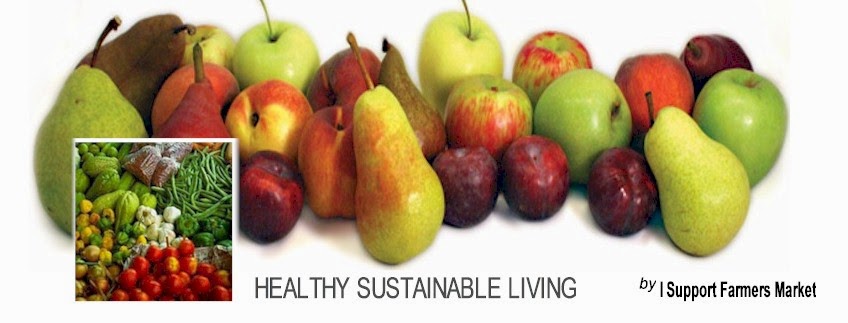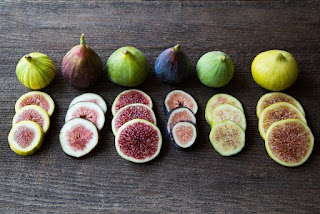1. Choose the Right Variety:
There are many varieties of fig trees, so choose one that suits your climate and preferences. Common varieties include Brown Turkey, Celeste, and Mission.
Consider factors like local climate, available space, and desired fruit characteristics when selecting a variety.
2. Select a Suitable Location:
Fig trees thrive in warm climates with plenty of sunlight. Choose a location in your yard or garden that receives full sun for at least 6-8 hours a day.
Ensure the soil is well-draining to prevent waterlogging, as fig trees do not tolerate waterlogged conditions.
3. Planting:
Plant fig trees in the spring or fall when the soil is warm and moist.
Dig a hole that is slightly larger than the root ball of the tree.
Place the tree in the hole, ensuring that the soil level around the tree matches the level of the surrounding ground.
Backfill the hole with soil and water thoroughly to settle the soil around the roots.
4. Watering:
Water newly planted fig trees regularly, keeping the soil evenly moist but not waterlogged.
Once established, fig trees are drought-tolerant but will benefit from occasional deep watering during dry periods, especially in the summer months.
5. Fertilizing:
Fertilize fig trees with a balanced fertilizer in the spring before new growth begins.
Avoid over-fertilizing, as this can lead to excessive vegetative growth at the expense of fruit production.
6. Pruning:
Prune fig trees in late winter or early spring while the tree is still dormant.
Remove any dead, diseased, or damaged branches.
Thin out overcrowded branches to improve air circulation and light penetration within the canopy.
Fig trees can be trained to a single trunk or multiple trunks, depending on your preference.
7. Protection from Cold:
In colder climates, provide winter protection for fig trees to prevent frost damage to the branches.
Mulch around the base of the tree to insulate the roots and protect them from freezing temperatures.
8. Harvesting:
Figs typically ripen in late summer or early fall, depending on the variety.
Harvest ripe figs by gently twisting them from the tree. Ripe figs will be soft to the touch and have a sweet aroma.
Varieties of FIGS are listed at the bottom of this article.
How to make FIG Bars
Ingredients:
For the Fig Filling:
2 cups dried figs, stems removed
1/2 cup water
2 tablespoons honey or maple syrup
1 tablespoon lemon juice
1/2 teaspoon vanilla extract
For the Dough:
1 1/2 cups all-purpose flour
1/2 teaspoon baking powder
1/4 teaspoon salt
1/2 cup unsalted butter, softened
1/2 cup brown sugar, packed
1 large egg
1 teaspoon vanilla extract
Instructions:
1. Prepare the Fig Filling:
Chop the dried figs into small pieces.
In a saucepan, combine the chopped figs, water, honey or maple syrup, lemon juice, and vanilla extract.
Bring the mixture to a simmer over medium heat, then reduce the heat to low and cook for about 10-15 minutes, stirring occasionally, until the figs are soft and the mixture thickens.
Remove from heat and allow it to cool.
2. Make the Dough:
Preheat your oven to 350°F (175°C).
In a medium bowl, whisk together the flour, baking powder, and salt.
In a separate large bowl, cream together the softened butter and brown sugar until light and fluffy.
Beat in the egg and vanilla extract until well combined.
Gradually add the flour mixture to the wet ingredients, mixing until a dough forms.
3. Assemble the Bars:
Take about two-thirds of the dough and press it evenly into the bottom of a lightly greased 8x8 inch baking dish, forming the bottom crust layer.
Spread the cooled fig filling evenly over the dough in the baking dish.
Crumble the remaining dough evenly over the fig filling layer, forming the top crust layer.
4. Bake:
Place the baking dish in the preheated oven and bake for 25-30 minutes, or until the top crust is golden brown.
Remove from the oven and let it cool completely before slicing into bars.
5. Serve:
Once cooled, slice the bars into squares or rectangles.
These fig bars can be stored in an airtight container at room temperature for a few days, or you can refrigerate them for longer freshness. They make a wonderful snack or dessert!
How to Make FIG Jam
Ingredients:
2 pounds fresh figs, stems removed and chopped
1 1/2 cups granulated sugar
1/4 cup lemon juice
1 teaspoon lemon zest
1/2 teaspoon ground cinnamon (optional)
1/4 teaspoon ground ginger (optional)
1/4 teaspoon vanilla extract (optional)
Instructions:
1. Prepare the Figs:
Wash the figs thoroughly under running water.
Remove the stems from the figs and chop them into small pieces. You can leave the skin on or peel them, depending on your preference.
2. Cook the Jam:
In a large, heavy-bottomed pot, combine the chopped figs, granulated sugar, lemon juice, and lemon zest. Stir well to combine.
If using, add the ground cinnamon and ground ginger for extra flavor.
Place the pot over medium heat and bring the mixture to a boil, stirring frequently to dissolve the sugar.
Once the mixture comes to a boil, reduce the heat to low and let it simmer gently. Cook the jam, stirring occasionally, until it thickens to your desired consistency. This usually takes about 45 minutes to 1 hour.
As the jam cooks, use a spoon to skim off any foam that forms on the surface.
Optional: Add vanilla extract for a subtle flavor enhancement. Stir well to incorporate.
3. Test for Doneness:
To check if the jam is ready, place a small amount on a chilled plate and let it cool for a few seconds. Run your finger through the jam – if it wrinkles and holds its shape, it's done. If not, continue cooking and test again after a few minutes.
4. Jar and Store the Jam:
Once the jam reaches the desired consistency, remove the pot from the heat.
Carefully ladle the hot jam into clean, sterilized jars, leaving a small amount of space at the top.
Wipe the jar rims with a clean, damp cloth to remove any drips or spills.
Seal the jars with lids and rings, ensuring they are tightly closed.
Allow the jars to cool to room temperature before storing them in the refrigerator.
The fig jam can be stored in the refrigerator for up to several weeks. If you want to store it for longer, you can process the jars in a water bath canner for long-term shelf stability.
5. Enjoy:
Enjoy your homemade fig jam on toast, biscuits, scones, or as a topping for yogurt or ice cream. It also pairs well with cheese and charcuterie boards.
This recipe yields about 3 to 4 cups of fig jam, depending on the size and ripeness of the figs. Feel free to adjust the sugar and lemon juice to suit your taste preferences.
Varieties of fig trees and when they Produce Fruit
Brown Turkey (Celeste):
Fruit Production: Brown Turkey figs typically produce two crops per year. The first crop, called the breba crop, ripens in early summer on last year's growth. The main crop ripens in late summer or early fall on new growth.
Characteristics: Brown Turkey figs have brownish-purple skin and sweet, juicy pink flesh. They are cold-hardy and well-suited for various climates.
Mission (Black Mission):
Fruit Production: Mission figs generally produce one crop per year, ripening in late summer or early fall.
Characteristics: Mission figs have dark purple to black skin and sweet, flavorful pink flesh. They are widely grown in warm climates and are commonly used fresh or dried.
Kadota:
Fruit Production: Kadota figs produce one main crop per year, ripening in mid to late summer.
Characteristics: Kadota figs have greenish-yellow skin and sweet, amber-colored flesh. They are often used for drying and canning but are also delicious eaten fresh.
Celeste:
Fruit Production: Celeste figs typically produce one main crop per year, ripening in mid to late summer.
Characteristics: Celeste figs have light brown to violet skin and sweet, flavorful pink flesh. They are known for their cold hardiness and are suitable for growing in cooler climates.
Chicago Hardy:
Fruit Production: Chicago Hardy figs are unique in that they produce fruit on both last year's growth and new growth, resulting in two crops per year. The first crop ripens in early summer on last year's growth, while the main crop ripens in late summer or early fall on new growth.
Characteristics: Chicago Hardy figs have bronze-colored skin and sweet, reddish-pink flesh. They are exceptionally cold-hardy and can withstand temperatures down to -10°F (-23°C).
Adriatic:
Fruit Production: Adriatic figs typically produce one main crop per year, ripening in late summer or early fall.
Characteristics: Adriatic figs have greenish-yellow skin and sweet, pale pink flesh. They are prized for their rich flavor and are excellent for fresh eating.
These are just a few examples of fig varieties, and there are many more to explore. The specific fruit production times may vary slightly depending on factors such as climate, growing conditions, and individual tree health.
What zone do figs grow in
Fig trees are versatile and can be grown in a wide range of climate zones, depending on the variety and local conditions. However, they generally thrive in USDA hardiness zones 8 through 11. Here's a breakdown:
Zone 8: Fig trees can grow well in zone 8, where winters are relatively mild with occasional frosts. However, some protection may be needed during colder winters, especially for young trees or in colder microclimates within zone 8 regions.
Zone 9: Zone 9 provides ideal conditions for fig trees, with mild winters and long, warm summers. Fig trees typically thrive in this zone and can produce abundant fruit without much winter protection.
Zone 10: Fig trees excel in zone 10, where winters are mild to warm and frost is rare. These conditions allow fig trees to grow vigorously and produce large harvests of fruit.
Zone 11: In zone 11, which includes tropical and subtropical regions, fig trees can grow year-round without interruption. They thrive in the consistently warm temperatures and ample sunlight found in these areas.
While fig trees are best suited to these zones, gardeners in cooler climates (zones 6 and 7) can still successfully grow figs by choosing cold-hardy varieties and providing winter protection such as wrapping the tree in insulation or covering it with blankets during freezing temperatures. Additionally, container-grown fig trees can be moved indoors during the winter in colder climates to protect them from freezing temperatures.
It's important to select fig varieties that are well-suited to your specific climate and growing conditions to ensure success. Additionally, local gardening experts and extension offices can provide valuable advice on growing figs in your area.


.webp)









